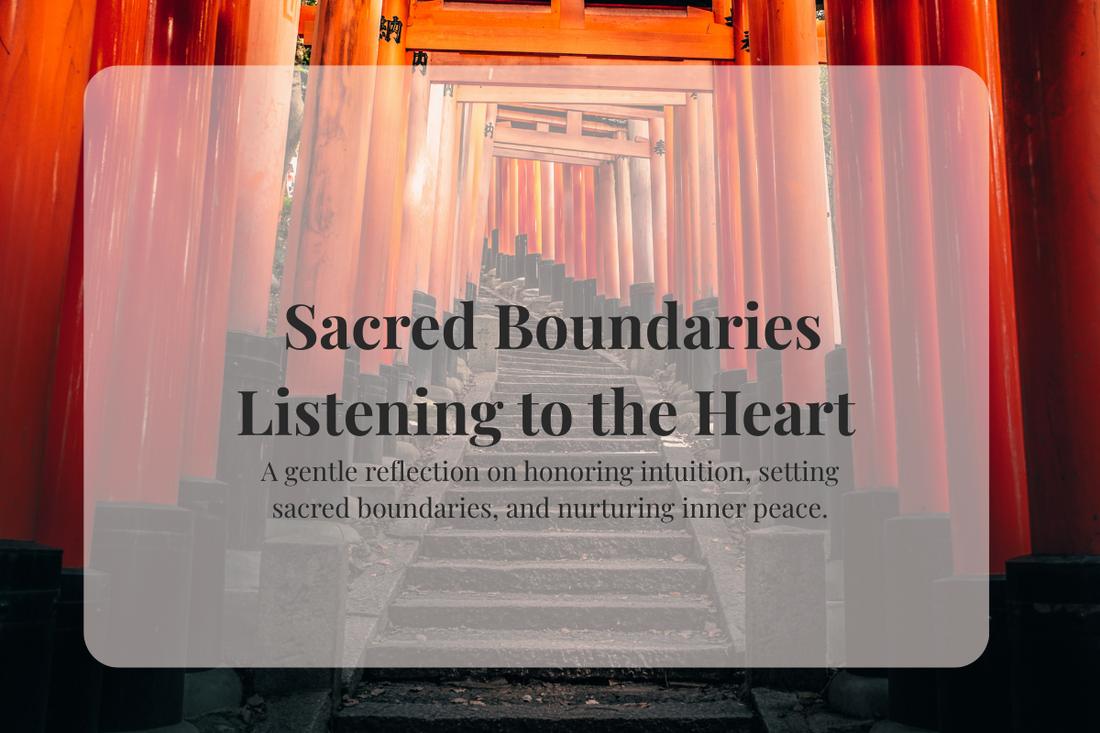
Sacred Boundaries: Listening to the Heart
Sometimes, without warning,
we feel a subtle discomfort stirring within us.
It’s small, almost imperceptible—
yet it’s a true signal from deep inside,
like the soft chime of a bell carried on the wind.
Recently, in an exchange with someone close to me,
I felt such a quiet shift.
There was no clear reason.
No harsh words, no sharp gestures.
And yet, something in the air between us had changed.
The tone, the glances,
the unspoken spaces between the words—
they all spoke quietly to my heart,
telling me that something was no longer the same.
Often, we are tempted to dismiss these sensations as “nothing.”
But in truth, they are the purest form of intuition:
the heart’s own sacred whisper.
Sacred Boundaries: Like the Shrines of Japan
When I reflect on such moments,
I am reminded of the sacred spaces in Japanese shrines.
The torii gates, the braided ropes, the pebbled paths—
all mark the threshold between the ordinary world and the sacred.
These boundaries are not drawn to shut people out.
They exist to protect what is holy,
and to invite us to step forward with respect.
We, too, are allowed to set such quiet boundaries within ourselves.
To retreat when we need to.
To protect the sacredness of our own spirit.
It is a truth that discomfort gently reveals to us:
where our own unseen lines are meant to be drawn.
Listening to Ancient and Modern Wisdom
In Zen Buddhism, there is a phrase: 放下著 (Hōgejaku) — "Simply put everything down."
The heavy expectations, the longing to be understood, the silent burdens we carry—
we are invited to lay them gently aside.
As I remembered this, another teaching surfaced in my mind:
Mel Robbins' Let Them Theory.
“If they choose to act that way, let them.”
Not in defeat, but in trust—
trusting that we no longer need to control, to change, or to carry what does not belong to us.
There is also the beautiful Zen teaching of 知足 (Chisoku) — "knowing sufficiency."
Recognizing the richness of what we already have,
rather than chasing after what we think is missing.
And the Japanese sense of 間(Ma)—the sacred space between things.
In words, in relationships, in the breath of life itself—
it is the quiet space that allows everything to breathe.
The Heart's Quiet Protection
I do not feel anger toward them.
Nor resentment.
Only a quiet knowing:
now is a time to step back, with grace.
Not to sever the connection,
but to honor the sacred boundary that my own spirit needs.
Like the invisible line at a shrine,
this space is not harsh or cold—
it is gentle, clear, and quietly powerful.
If destiny wishes, perhaps the doors will open again someday.
But for now,
I choose to protect my heart with soft hands.
I trust that the little whisper of discomfort was not an error,
but a sacred guidance.
Wrapped in Furoshiki: A New Thread of Connection
Meanwhile, life continues to weave beautiful new threads.
Through the spirit of furoshiki—the traditional Japanese art of wrapping—I have connected with a furoshiki enthusiast in Israel.
Across oceans and cultures, our shared love for this simple yet profound cloth has created a new bond.
Knowing that something I cherish has touched another heart so far away—
fills me with quiet gratitude.
Some days, it’s enough just to keep breathing.
To simply make it through.
Other days, connection and light find their way back to us naturally.
Just like a furoshiki gently wrapping a precious gift,
may we also learn to wrap our hearts with kindness and patience.
Today, again, I choose gratitude.
And I offer it to you, too.
Thank you for walking through these words with me.
If you are feeling a quiet discomfort in your life, know that it is not a mistake.
It is your heart speaking its sacred truth.
You don’t have to fix it today.
You don't have to figure everything out.
Simply breathe, and allow yourself to be gently held—by your own spirit, and by the quiet grace of life itself.
